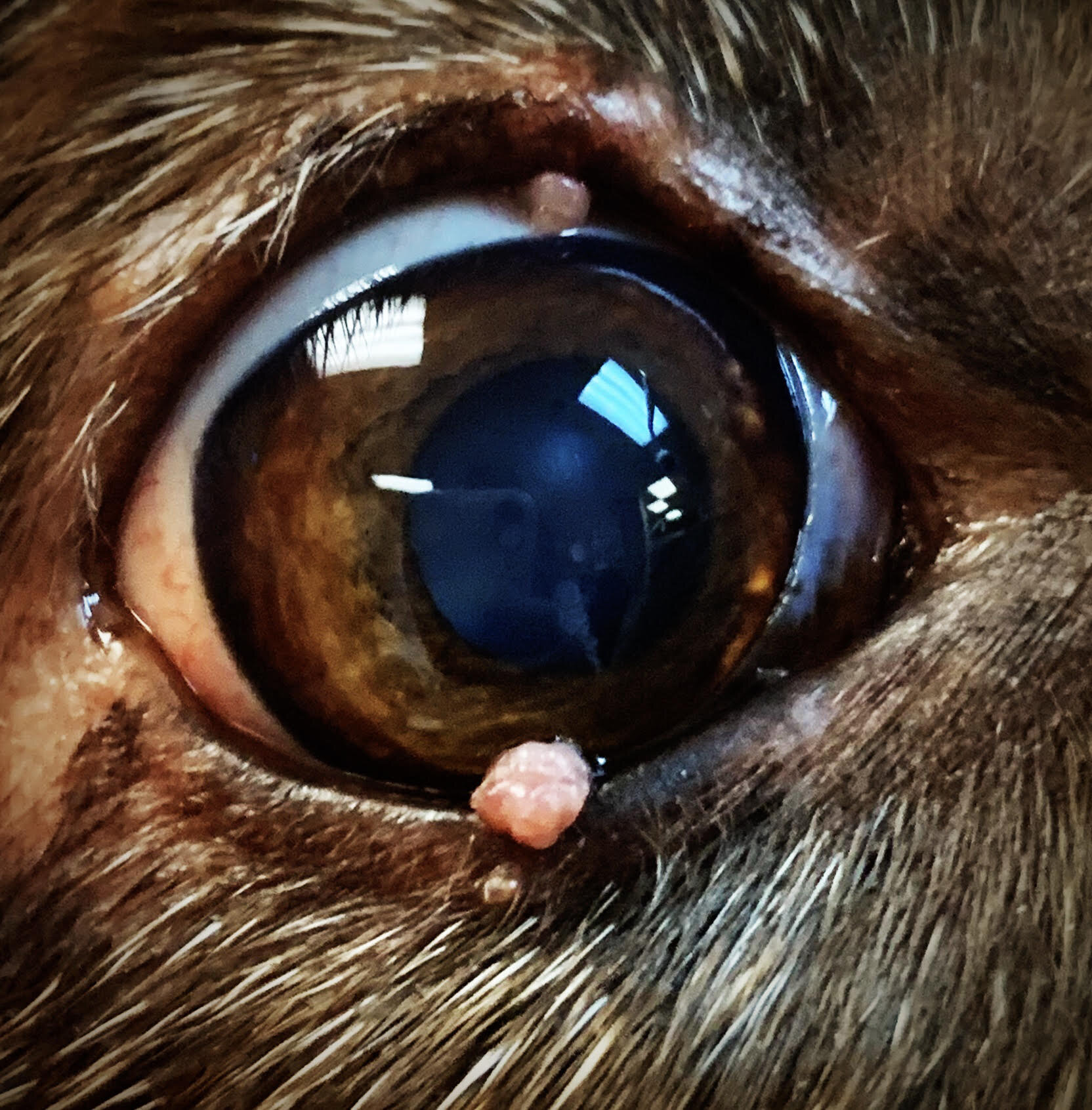Eyelid Tumors: The Sooner, The Better
Eyelid Tumors: The Sooner, The Better
If your pet has an eyelid mass, it may be a tumor. Prognosis and treatment plans will depend on the tumor type, species and age of the patient. For instance, most eyelid masses in older dogs are benign, focally invasive tumors, such as meibomian gland adenomas, epitheliomas, melanocytomas and papillomas. In fact, in dogs, benign tumors outnumber malignant masses by a ratio of 3 to 1. Cats, on the other hand, are more likely to develop aggressive or malignant tumors, such as squamous cell carcinomas and mast cell tumors. In those patients in which a malignant tumor is suspected, additional diagnostic testing may be recommended prior to tumor removal, specifically cytology and/or biopsy, chest x-rays, abdominal ultrasounds and lymph node aspirates. In some cases, a CT scan may also be pursued to assess extent of the tumor.
Small, benign eyelid tumor may be removed via less invasive surgical techniques. For example, many veterinary ophthalmologists are able to perform eyelid tumor debulking and adjunctive cryotherapy using only mild sedation or in some cases, none at all. Typically, sutures are not needed as the debulking site is not full thickness. Following debulking and cryotherapy, there is an approximately 15% recurrence rate within 7-12 months of the procedure. Treatment of a malignant or a full thickness tumor will require more extensive surgery, known as a wedge resection or other blepharoplastic procedure +/- skin flap. These patients will require general anesthesia and will have sutures that may need to be removed approximately 2 weeks after surgery.
Regardless of tumor type, it is important to seek veterinary care as soon as the eyelid mass is noticed. Early intervention can prevent local complications from the eyelid mass such corneal ulceration, corneal scar tissue formation and conjunctivitis some of which can be painful or vision threatening. More importantly, early intervention may allow for less invasive surgery and/or prevent spread of a malignant tumor to other areas of the body.

